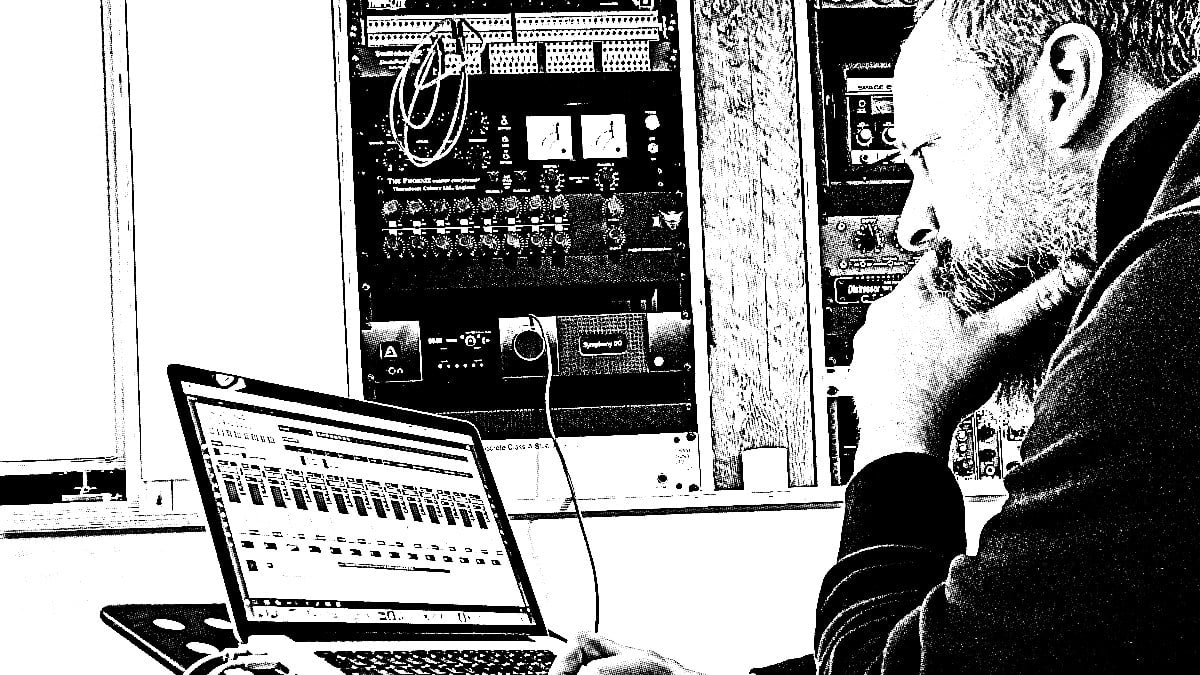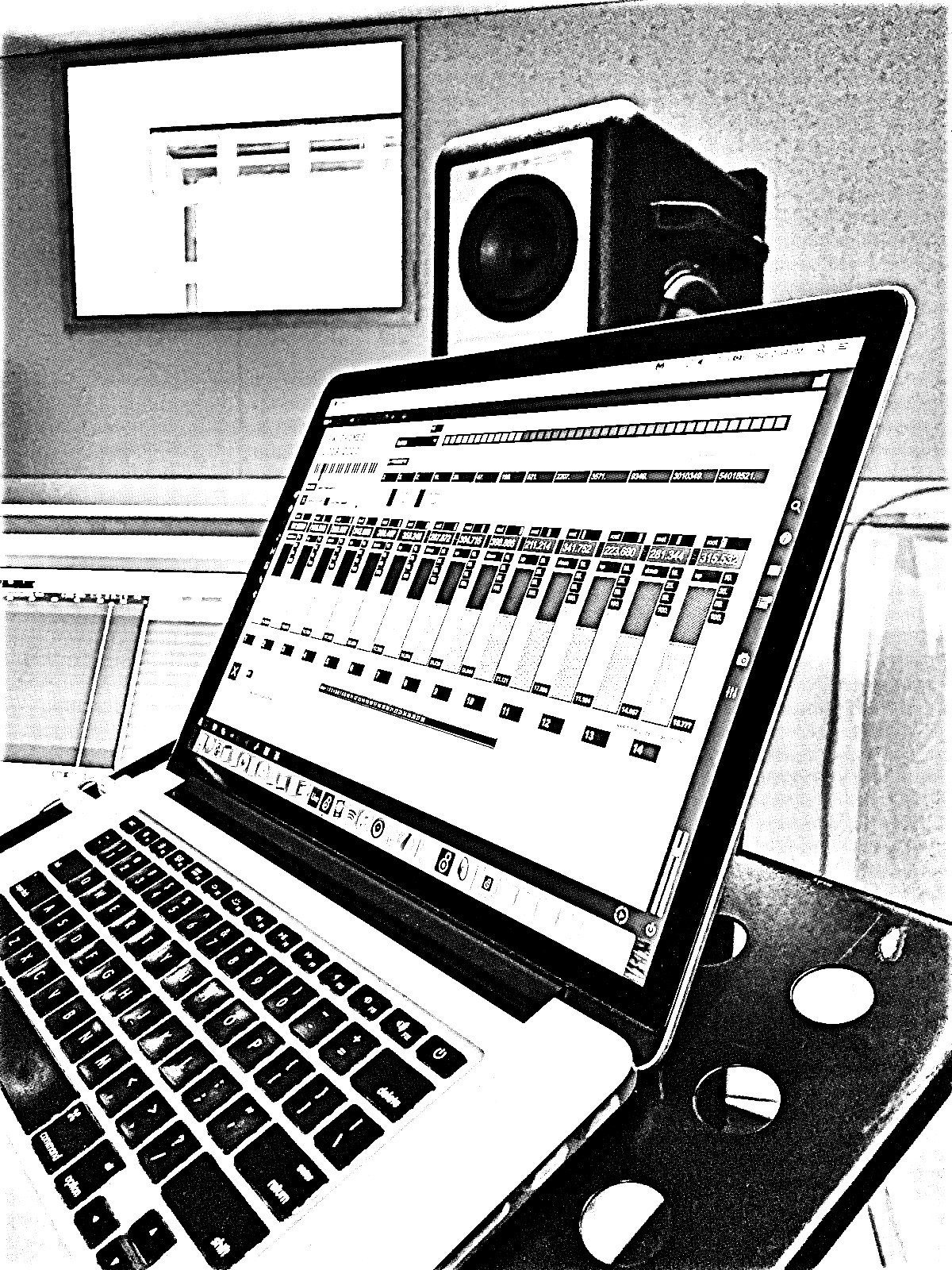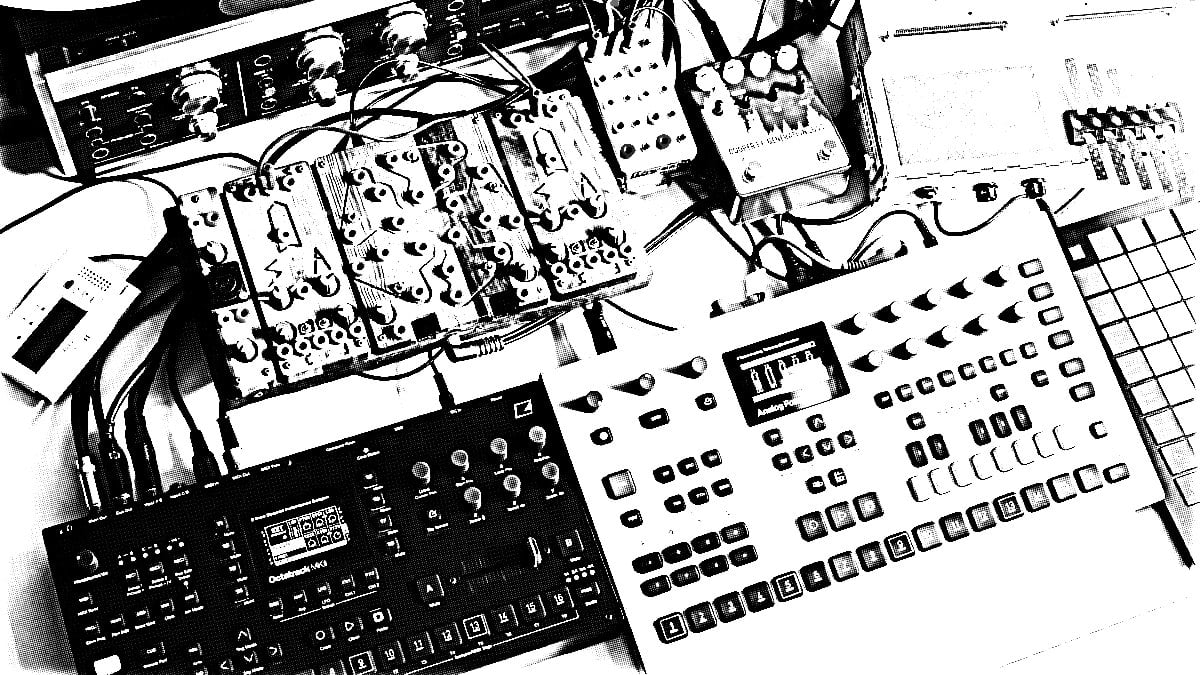
Greg Davis strikes me as a reluctant scientist. He toils in the wilds of Vermont, surrounded daily by the history of recorded music in his Autumn Records shop. Greg’s sonic tinkering goes back more than a couple of decades with an impressive series of releases for the likes of Kranky, Room40, Home Normal, and his imprint, which shares the name of his record store. Over the years, Greg experimented with processed ‘organic instruments’ like guitar (traditionally his main instrument), percussion, voice, field recordings, and esoteric devices. An online acquaintance told me about seeing Greg play nothing but an Asian gong, a performance he called “dope.” More recently, Greg has devoted himself to electronic composition, utilizing his custom software systems in the Max/MSP environment.
That brings us to New Primes. Prompted by Joseph Branciforte, who recently launched the Greyfade label, Greg revisited his 2009 release, Primes, and the software used to create it. Like a good scientist, Greg tweaked his Primes formula based on experimentation and past results, ending up with the refined generative gears that power New Primes. He based his formula on prime number sets that subtly trigger changes and intervals in the music’s intertwining tones. But the reluctance in Greg’s science comes from his concern for what the audience finally hears. Though mathematical in construction, the pieces are edited and arranged to, above all, provide a warm and pleasurable gateway for the listener. In our interview, Greg refers to this as his ‘dichotomy.’ I’d argue this word informs his work even more than Greg’s acumen with programming his software.
Bear with me, for this is a little silly, but I can connect experiencing New Primes to a recent viewing of Chantal Akerman’s Jeanne Dielman, 23 Quai du Commerce, 1080 Bruxelles. Jeanne Dielman (as we’ll shorten it from now forward) just topped the 2022 Sight and Sound Greatest Films of All Time poll, determined by a pool of critics and others who haunt the movie industry. After putting off this film for a while, the award inspired me to take the plunge.
The 3+ hour Jeanne Dielman is infamous for long, static scenes of a housewife doing everyday chores. There’s a familiar repetition to Jeanne’s tasks, and the mundanity becomes fascinating after a while. The viewer falls into Jeanne’s rhythm. And when something breaks the cycle — even as small as the accidental drop of a fork on the floor — it’s a dramatic occurrence. Little differences become paramount.
New Primes features an arrangement of sine tones that hum and modulate, following generative paths prompted by prime number calculations. Like Jeanne’s routine, on the surface, that sounds clinical, orderly, and methodical. But the beauty lies in small changes. As the listener settles into Greg’s humming waves of sound, things that would typically go unnoticed become sections and movements. A slight bend in the stereo field or a tone suddenly vibrating a pinch slower in tandem with another — these minuscule moments are noticeable and even emotive shifts on New Primes.
My strained comparison to Jeanne Dielman is indeed silly as, unlike the film, nothing shocking happens in New Primes. The music lulls and placates while remaining thoughtful. And there’s no need to understand math (I don’t!) or even know what a prime number is. One can listen to New Primes simply as a recent addition to the drone pantheon. However, Greg’s obvious intention and meticulous attention help the album rise above the usual ambient release. Yes, this is science, but it’s the kind that’s experienced firsthand — like an everyday routine that wouldn’t be possible without the numbers and sequences that secretly bind things together.
I had the pleasure of speaking with Greg Davis about his process and the effort to bring New Primes to life. There’s an excerpt from that part of the conversation in the transcript below. But we started by talking about record stores — I once owned a shop, too, and I wondered if that influenced how Greg approached music. My store sure had an effect on me. Please enjoy the whole conversation via the handy audio player.
❋-❋-❋-❋-❋-❋-❋-❋
MD: How much preparation went into New Primes before you actually hit ‘record?’ Let’s include thinking about it and developing the concept.
GD: What happened was I developed the software and the system when I made [my 2009 precursor] Primes, and then it sat dormant until probably like 2018. So, ten years, basically. Joe [Branciforte of Greyfade] contacted me a little before that and asked if I wanted to revisit Primes. I then dove back into my software and started tweaking it. I worked on it for probably about a year leading up to a performance in 2019 in New York City. I did a multichannel audio performance of it at The Fridman Gallery there. I reworked the whole software for that performance. Around that time or shortly after, I felt like the software was in a nice new place. And that’s when I started to record all the different pieces from the software, which was the first part of the process. I just made long recordings. These pieces are all generative, so they could last for hours or days or however long — each different prime number set. I would make 15-minute to 20-minute recordings of a piece doing its thing; then, we spent some time choosing which pieces we wanted to use. I went to Joe’s studio and did a proper mixing session to come up with the pieces that you hear on the album.
MD: If you used identical parameters to record again, would New Primes be exactly the same?
GD: No, it’d be different. The software that created it is generative. Everything exists on these prime number cycles and systems — things never repeat, or it takes a really, really long time for anything to repeat. The pieces are going to have the same sound or characteristics, but the micro-details will be different every time. The way things fade in and out, the interaction between different tones or different clusters of sounds will be different. That’s the nature of the software.
MD: Besides the final editing, you’re not necessarily doing anything in the recording process. There are subtle stereo shifts and things like that — are those part of the generative output?
GD: Yeah, all the stereo imaging stuff is part of the software as well. That’s built into it. So, the only thing I’m doing with the final recordings is mixing and setting volume levels. Every piece has 14 tones — 14 sine tones — and they’re related to these prime number sets. The final part of the piece was mixing it, getting a really nice balance between all the different tones and frequencies, and then making some edits. We would take a larger piece to edit; I basically decided I wanted to have six pieces or three pieces per side. I wanted to keep it at a comfortable length for a vinyl LP. That came to six or seven minutes per piece, and so we zeroed in on a section that felt like a chunk of time.


MD: This goes back to you talking about the end result being more important to you than the actual process. I understand this because when I first listened to New Primes, I didn’t know the concept. But, at the same time, I really got a lot out of it. I quite enjoyed the listen on its own terms. So, do you want people to know all the work you put into it ahead of time?
GD: No, not really. I just want people to listen and spend some time with it. If people want to know the process or what goes into it, that’s fine. And they can probably find that out by looking online for reviews or interviews, as I’m always happy to talk about that stuff. But I’ve never been interested in putting too much programmatic info into my music or a ‘how the sausage is made’ kind of thing in liner notes. Mainly I want people to listen, come to their own conclusions, and have their own feelings about it. I don’t want to color people’s experiences with music because that’s important to me as a listener of music that I like. I want to come to it with an open mind and an open heart and just try to be present in the music. To have an experience with it that’s mine, which can evoke all sorts of things when I listen to music.
MD: This very intentional process you put into it — does it create a background hum of sorts for the listener? Like something hidden that’s tying it all together? I’m talking about a shadow intention that can be picked up on when listening without knowing what’s really below the surface.
GD: I like that idea, and I think that’s very true for New Primes. This whole system I created creates a very distinct and unique harmonic space. It’s a kind of drone space, for lack of a better word. I’ve made lots of different, drone-style albums in my career, and some of them are more process-based, and some are just intuitive. But this particular record has a distinct sonic signature. And that’s due to the programming and process that went into it. I really like the result of it because it’s different. The process helped me arrive at a different space that I find interesting. And, you know, if I were doing this intuitively, I probably would make an album that’s not as dissonant. New Primes almost has this darkness to it, you know? I don’t tend to make too much music that’s dark in nature or dissonant. These qualities or characteristics revealed themselves to me as I was making the music, and I really liked that. It helped me access some different stuff — some different zones or feelings.
→ Greg Davis’s New Primes is out now on Greyfade. It’s available on Bandcamp and on vinyl. You won’t find it on the streaming places.

